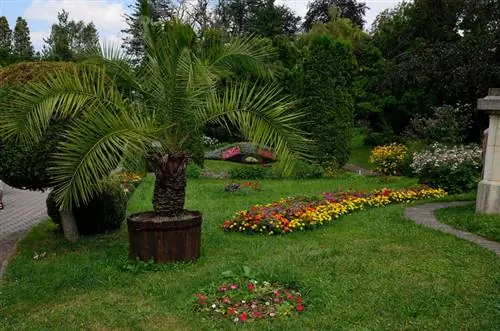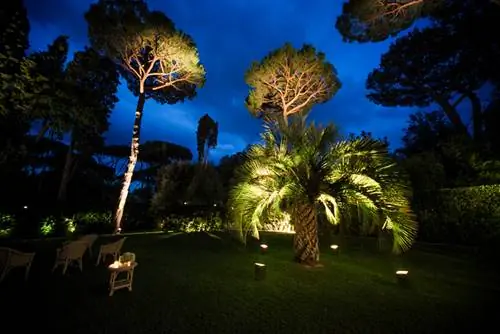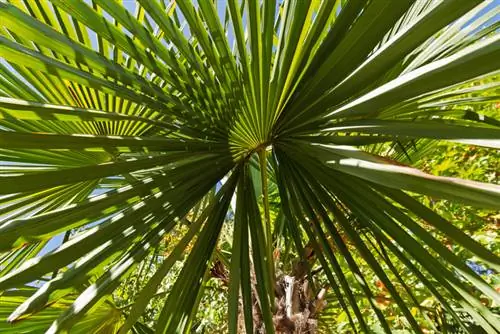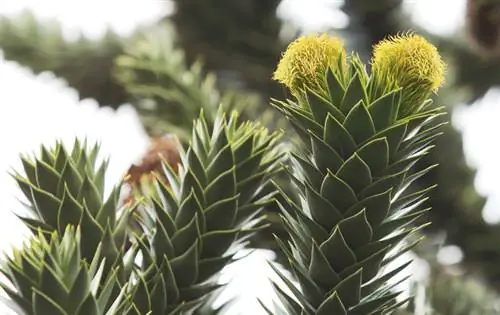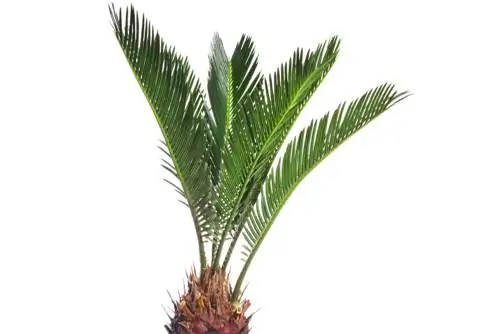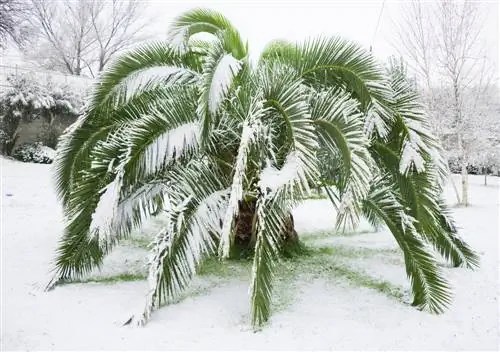- Author admin [email protected].
- Public 2023-12-16 16:46.
- Last modified 2025-06-01 06:02.
The Chilean honey palm has medium care requirements. It is very decorative and also grows very slowly. Although it can be easily cultivated in pots, the container should be quite high because the honey palm has long taproots.
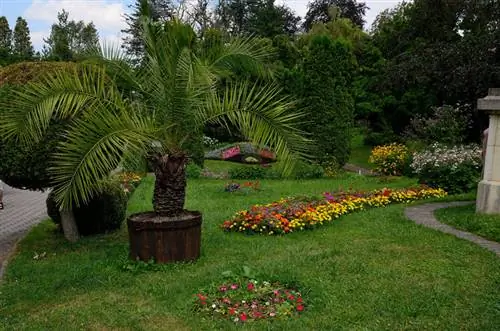
How do I care for a Chilean honey palm?
The Chilean honey palm requires a bright location, regular watering and fertilization, and is hardy from around 5 years old. It grows slowly, forms a stem from around 25 years old and only flowers at around 60 years old.
Planting the Chilean honey palm - tips and tricks
Until the Chilean honey palm is at least 5 years old, it should not be permanently planted in the garden. It only becomes hardy as it gets older. Special palm soil or a mixture of sand, clay, gravel and humus is suitable as a plant substrate.
Watering and fertilizing the honey palm
The water and fertilizer needs of your Chilean honey palm depend significantly on the size of the plant, but also on the time of year. In summer the honey palm needs a lot of water. Although the root ball should always be moist, the top layer of soil should be allowed to dry out a little from time to time. It is best to use rainwater. You should also fertilize the honey palm regularly from April to October.
The Chilean honey palm in the garden
The Chilean honey palm is still quite rare in German gardens, but is very decorative at around 25 meters tall. The trunk only forms when the plant is around 25 years old. You have to wait a lot longer for the flowering, because the Chilean honey palm only blooms when it is around 60 years old. The location should be warm and sunny.
The Chilean honey palm in winter
An old Chilean honey palm can tolerate frost down to around -12°C or -15°C. However, young plants are sensitive to frost and are not hardy. You should also not leave potted plants outside without protection over the winter. If the root ball freezes, your honey palm will die of thirst as it continues to evaporate water. A cool, bright winter quarters is ideal. The cooler the palm tree is, the less water and fertilizer it needs.
The most important things in brief:
- medium care needs
- very slow growing
- bright location
- water and fertilize regularly
- hardy from around 5 years
- Stem does not form until around 25 years old
- only blooms when you are around 60 years old
Tip
You can also cultivate a young Chilean honey palm as a houseplant or in the winter garden.

